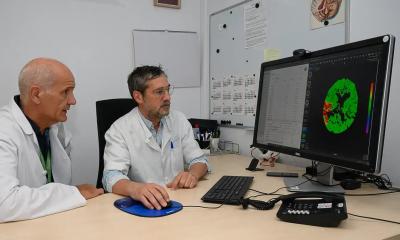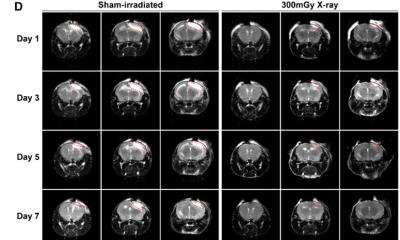Robotics and upper limb rehabilitation after strokes
In many ways the brain works like a hard disk. If the plug is pulled, important data is damaged and the system has to be rebooted.

Every year, 15 million people worldwide suffer a stroke – although 10 million survive they often need to re-learn basic skills such as walking or grasping.
The ongoing development of technology-assisted physical therapy has become an important focus in neuro-rehabilitation. The prognosis for the functional recovery of the lower limb is better than for the upper limb. In line with existing knowledge about the principles of motor learning, researchers and development engineers in the industry are working on intelligent devices that will help in upper extremity rehabilitation. In collaboration with Dr Boudewijn Kollen and Professor Hermano Krebs, Professor Gert Kwakkel, Chair of Neuro-rehabilitation at the Department of Rehabilitation Medicine, VU University Medical Centre, Amsterdam, and President of the Dutch Society of Neuro-rehabilitation, conducted in a systematic review of the effects of robot-assisted therapy on motor and functional recovery of the upper limb in stroke patients. Karoline Laarmann (European Hospital) asked Prof Kwakkel about the current state of play in upper limb robotics.
Although it is commonly known that robotics offers significant improvement in upper limb motor function, he said, ‘We are not sure just how this improvement in motor function translates into improved activities of the paretic arm and hand. Rehabilitation as a healthcare strategy aims to give patients back their autonomy; improvement in motor function is only relevant if it enables the patient to perform meaningful daily activities again. Unfortunately, most trials on upper limb robotics failed to evaluate the specific impact of robotics on dexterity. In addition, most robotics do not allow patients to use compensation strategies with their arm and trunk to achieve tasks such as reaching and grasping objects. In other words, to design robots we need to understand how and what patients exactly learn when regaining upper limb skills. What we know is that patients learn to adapt to, or compensate for, the existing neurological deficits. With that, we need better insight into the mechanisms that underlie brain reorganisation after brain injury.
‘The success of robotic devices in rehabilitation is heavily built upon the evidence that intensity of practice and the task and context specificity are the main drivers that make practice effective. Unfortunately, there are big differences between hospitals and rehabilitation settings in Europe with respect to the amount of practice given by physio and occupation therapists. By using computer-assisted devices, tasks can be learned safely with far more repetitions at an individual level when compared to usual face-to-face therapy. Additionally, when using robotics the complexity of this task can be better controlled with greater precision than in more expensive conventional therapy sessions. Not to forget, it is the fun while exercising with computers, which motivates patients to train with much more enthusiasm and ambition. By using games, e.g. reaching or drafting games, where they can reach points and personal high scores, patients get an immediate feedback on how they have performed a movement and if they have improved. However, the effectiveness of robotics also depends on the appropriate selection of patients.’
How are they selected? ‘There is a critical time window of about five weeks after a stroke where we can give an almost 95% prognosis of who will regain some dexterity at six months, or not. The patients who show some return of wrist and finger extension in this period, have above 90% of a chance of regaining some dexterity, hand function and upper limb function in a meaningful way whereas, for those who fail to have this voluntary control, the probability of regaining dexterity at six months will be under 10%. In other words, the final outcome is largely defined within the first five weeks after a stroke. Knowledge about the functional prognosis is important in selecting patients. As in constrained induced movement therapy, only patients with a potential for regaining some dexterity will be in favour of upper limb robotics.’
In this developing field the challenges are many before robotics can become generally used for neurological rehabilitation. ‘The challenge in the near future would be to build flexible machines that are applicable for the continuing changing ability in motor control within and between stroke patients,’ Prof Kwakkel explained. ‘The main problem with existing machines is that they are too rigid and insufficiently allow patients to compensate in their motor control. In other words, we need machines that assist-as-needed. For example, a number of upper limb robotics do not allow the patient to use the trunk in their preferred compensation strategy. Therefore, future research should focus on longitudinal kinematic analysis to address the question of whether recovery is a matter of restitution of motor control or rather a matter of learning to use compensation strategies. Unfortunately, there is neither international consensus nor information exchange on how to design future robots, which could, of course, accelerate new technical breakthroughs. In our meta-analysis we could not establish significant differences between the types of upper limb robotics in motor outcome after stroke.’
01.07.2009










